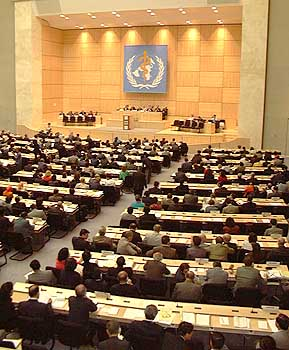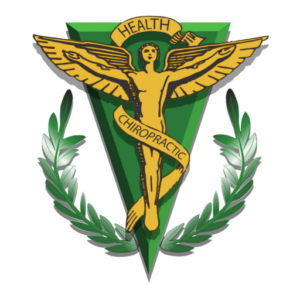By Michel Tetrault, DC
– A brief editorialized review of the recent WHO publication “Legal Status of Traditional Medicine and Complementary/ Alternative Medicine.”
 The World Health Organization (WHO) has released its 2001 “Worldwide Review” of 124 countries and their efforts at recognizing the value of healthcare services that fall outside the recognized and highly regulated Imperial or western medicine. In this work they elected to include the current status of the chiropractic profession in each country, wherever information was available.
The World Health Organization (WHO) has released its 2001 “Worldwide Review” of 124 countries and their efforts at recognizing the value of healthcare services that fall outside the recognized and highly regulated Imperial or western medicine. In this work they elected to include the current status of the chiropractic profession in each country, wherever information was available.
A notable quote from the publication can be found on page 4, where it states: “The World Health Organization encourages and supports Member States to integrate traditional and complimentary/ alternative medicine into national health care systems and to ensure their rational use.”
We are thankful for the efforts of the WHO to objectively report the representation of chiropractic in the world today in its publication. Although there may be sound arguments against including chiropractic in these other classifications, nevertheless, the WHO has elected to include the information it has received on chiropractic in its Traditional Medicine (TM) and Complementary/ Alternative Medicine (CAM) report. Chiropractic is unavailable in 160 countries and so when one looks at the lack of chiropractic presence in the majority of the world’s countries, it is understandable for the WHO to lump this emerging and growing profession at this time in history within its existing administrative capabilities. Credit is due to the major contributing organizations, in particular the World Federation of Chiropractors (WFC) and Life University for their persistent presence at the WHO over the past two decades.
The following table is a snapshot of the 189-page document outlining to what degree we find TM, CAM and Chiropractic integrated, included, tolerated or unrecognized by the respective countries in each of the 6 major regions of the globe. What does stand out is the sheer lack of exposure there really is for chiropractic in comparison to the other non-medical healthcare systems we find throughout the world and something to take serious note of.
(TM and CAM disciplines) (Chiropractic Recognition)
| REGION (T#) | IG | IC | TO | UR | 0 | A | B | C | |
| Africa (44) | 19 | 15 | 2 | 8 | 38 | 0 | 3 | 3 | |
| The Americas (19) | 9 | 5 | 3 | 2 | 12 | 0 | 3 | 4 | |
| E. Mediterranean (12) | 1 | 3 | 1 | 7 | 9 | 0 | 1 | 2 | |
| Europe (21) | 1 | 17 | 2 | 1 | 10 | 3 | 4 | 4 | |
| SE Asia (9) | 7 | 2 | 0 | 0 | 9 | 0 | 0 | 0 | |
| W. Pacific (19) | 5 | 14 | 0 | 0 | 13 | 1 | 2 | 3 | |
| Totals | 42 | 56 | 8 | 18 | 91 | 4 | 13 | 16 |
TM & CAM: IG = Integrated IC = Inclusive TO = Tolerated UR = Unrecognized
Chiropractic: 0 = Nothing Official A = Included in CAM B = Partial Registration C = Fully Protected
The majority of the non-western countries that comprise 2/3rds of the world’s population are poor and can little afford Imperial medicine and as such is where the poor see their traditional healers. In looking at the regions with the greatest utilization and acceptance of TM and CAM services such as SE Asia, W. Pacific and Africa, TM and CAM are strongly accepted by their governments and integrated in national healthcare policies. This is in direct contrast with the European and E. Mediterranean regions where laws continue to allow the monopolization of Imperial Medicine at the exclusion of all others.
One of the significant values of this report for the chiropractic profession is the specific information provided about the existing non-medical services available to the average citizen in their own country. Even though there is no duplication of chiropractic services by any other provider, we have to realize that in the absence of chiropractic services people have to go somewhere for care and when they do they frequent their TM and CAM providers. Having the knowledge of what services are already available certainly is important to know, as more and more chiropractors are willing to pioneer their profession abroad.
One difficulty faced by the pioneer chiropractors is the trend to lump chiropractic as just one more manual therapy and the challenge to educate the community about the difference offered by chiropractic care in contrast to local manual healers… i.e.: that DCs are college trained Primary Portal of Entry health care providers that utilize non-allopathic, non-drug methods of assisting their patients in regaining and maintaining their health.
The publication “Legal Status of Traditional Medicine and Complementary/ Alternative Medicine” may also serve as a useful reference text in the development of a country strategy by the chiropractic leadership. This can go a long way to understand where the prospective allies and opposition may exist in planning efforts to legitimize the chiropractic profession in a given country. There is sufficient information reported to better understand where new chiropractic patients have been accustomed to seek care and to direct further studies on these local health care providers.
An excellent example is the study of the Filipino hilots by John O’Malley, DC, PhC extending from 1992 to 1996. His thesis has meticulously detailed the folklore and techniques of these traditional healers who continue to serve their communities today. This study was distributed to the hand full of DCs now in practice in the Philippines, to aid in their understanding of the roles played by the hilots and to foster respect for them. This type of study needs to be repeated in all counties where there are traditional healers and the WHO report does an excellent job of indicating this presence.
Out of the 258 separate countries in the world, 191 have joined the United Nations and the World Health Organization. The fact that 124 countries, about half of all countries, were able to contribute to this report one can attest to the relative value of this document. In developing better ways to effectively nurture the development of chiropractic for the many pioneers that are out there it calls for the chiropractic leadership to maintain a “satelite” perspective. When there are chiropractors in 100 countries today, in comparison to just 20 or 30 just 30 years ago, it becomes important to understand the bigger picture. Thankfully, through continued involvement at the highest levels in global healthcare we are beginning to see the fruits of years of seemingly frustrating efforts.
As readers find themselves attracted to the issues in the globalization of chiropractic it is recommended to also become familiar with the “Global Strategy for Chiropractic” that has been developed by the Chiropractic Diplomatic Corps. You are invited to read this book only available online at www.ChiropracticDiplomatic.com in Adobe format. Copies of the book “Legal Status of Traditional Medicine and Complementary/ Alternative Medicine” is available from the World Health Organization, publication #WHO/EDM/TRM/2001.2.

